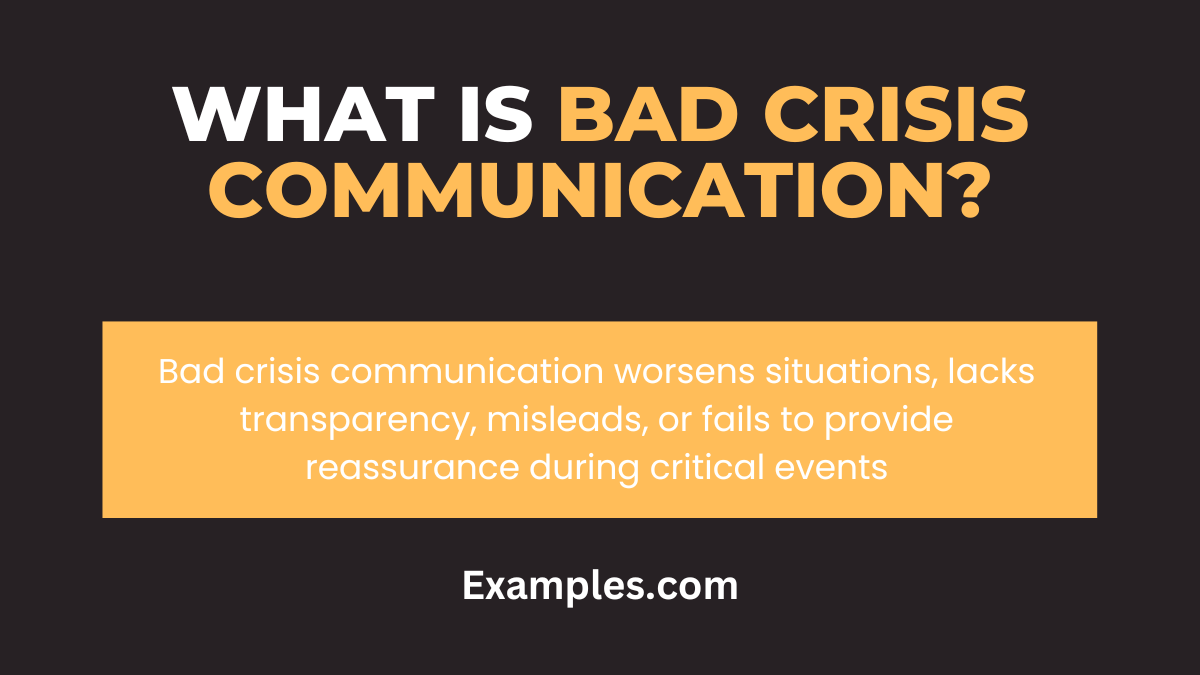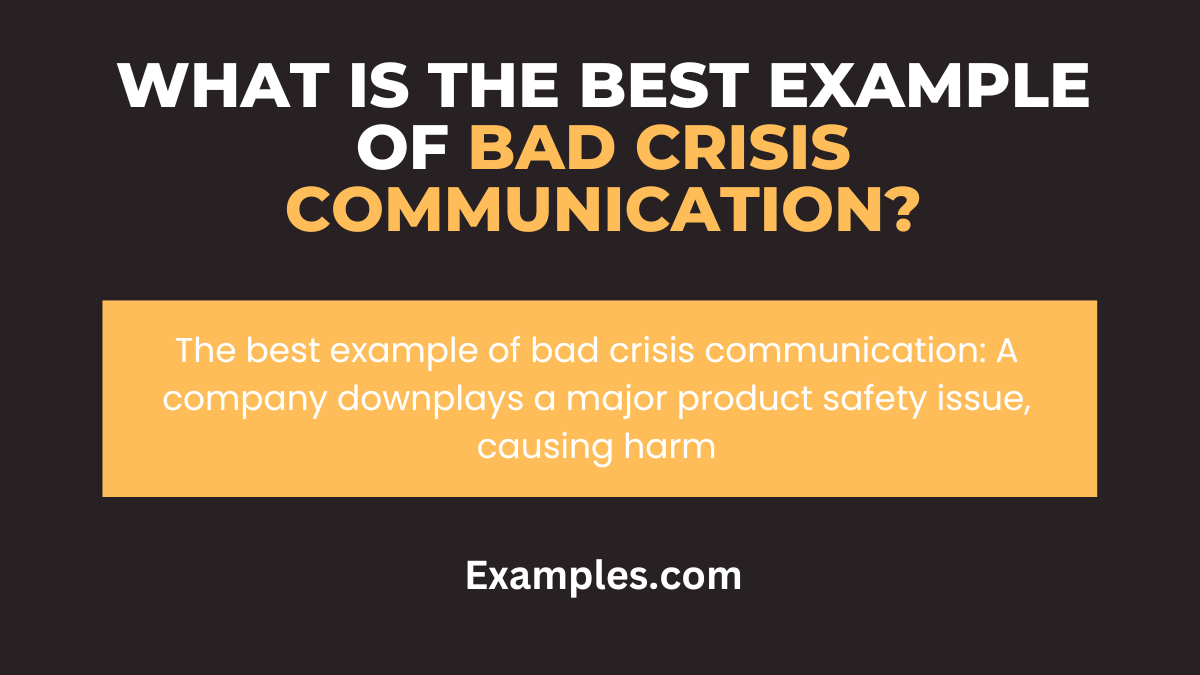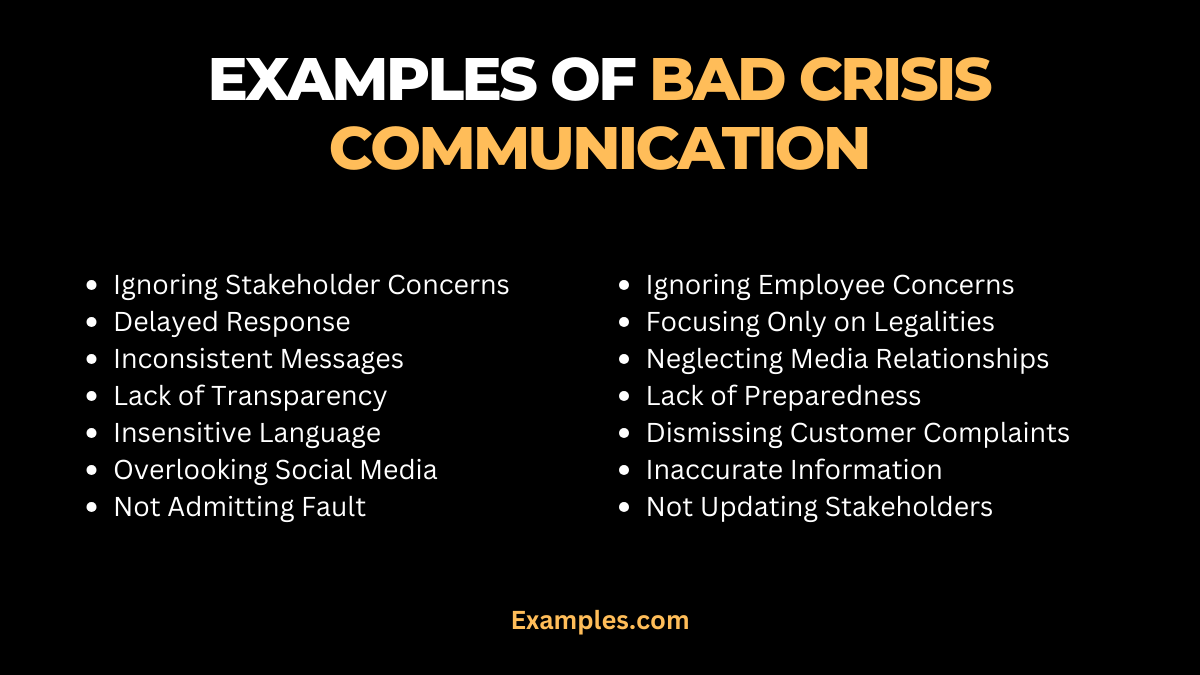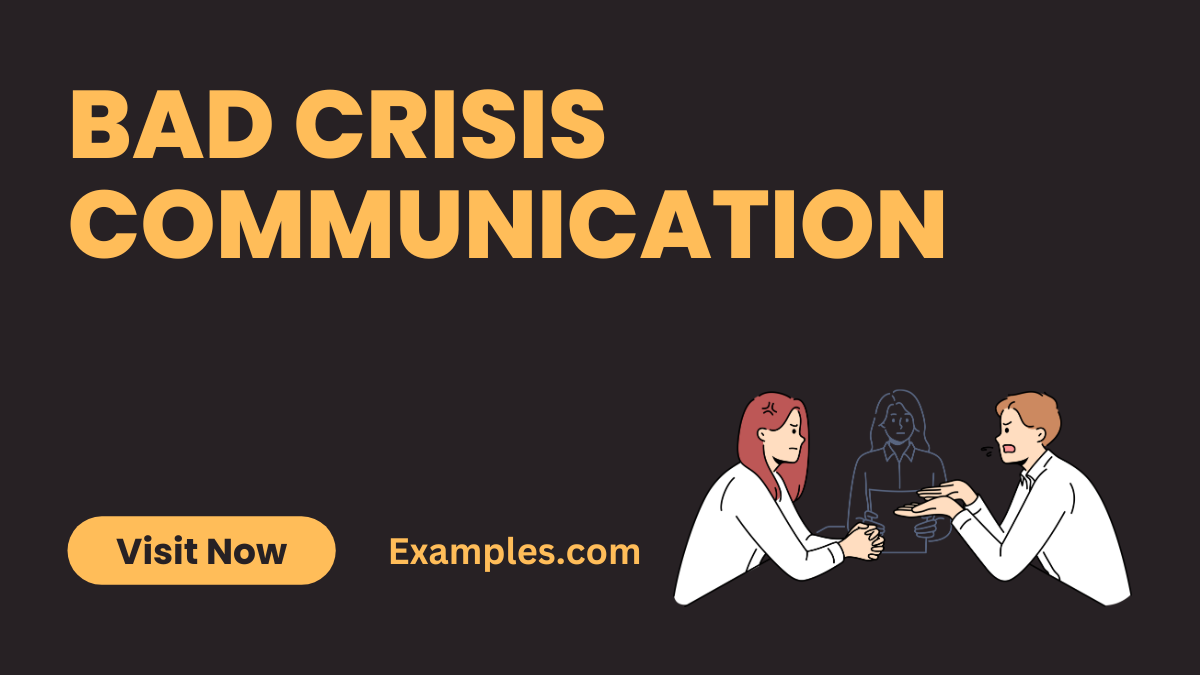14+ Bad Crisis Communication Examples
Understanding bad crisis communication examples is crucial for any organization. In this guide, we delve into some of the most significant mishaps in crisis communication. These examples not only highlight what went wrong but also offer valuable lessons on avoiding similar pitfalls. From a lack of transparency to inconsistent messaging, each case study provides insights into the complexities of handling crises effectively. Our focus is on real-world scenarios where communication breakdowns led to exacerbated problems, serving as a stark reminder of the importance of adept crisis management.
What is Bad Crisis Communication?

Bad Crisis Communication Examples refer to situations where an organization’s response to a crisis has been ineffective, often worsening the situation. These examples usually involve a lack of clear, timely, and honest communication. Key issues include delayed responses, misinformation, lack of empathy, and failure to address the concerns of all stakeholders. Analyzing these examples helps us understand the pitfalls of crisis communication and the importance of a well-prepared strategy.
What is the Best Example of Bad Crisis Communication?

One of the most prominent examples of bad crisis communication is the BP Oil Spill incident in 2010. BP’s initial response was marked by underestimating the severity of the spill and a lack of transparent and empathetic communication with the public. This not only damaged the company’s reputation but also led to significant mistrust and criticism from the public, stakeholders, and media.
15 Examples of Bad Crisis Communication

1. Ignoring Stakeholder Concerns: Failing to address key stakeholder worries can escalate a crisis.
Example: “We have no comment on the issue at this time.”
2. Delayed Response: Waiting too long to respond can harm credibility.
Example: “We will issue a statement next week.”
3. Inconsistent Messages: Providing conflicting information creates confusion.
Example: “The situation is under control,” followed by “We are still assessing the situation.”
4. Lack of Transparency: Avoiding full disclosure can lead to distrust.
Example: “We cannot disclose any details at this time.”
5. Insensitive Language: Using inappropriate or insensitive language can worsen the situation.
Example: “It’s not a big deal.”
6. Overlooking Social Media: Neglecting social media platforms can spread misinformation.
Example: No response to critical tweets.
7. Not Admitting Fault: Failing to take responsibility can damage reputation.
Example: “It was not our fault.”
8. Over-Promising and Under-Delivering: Making commitments that aren’t fulfilled.
Example: “We will resolve this issue immediately,” but taking weeks to act.
9. Ignoring Employee Concerns: Overlooking internal communication can lead to leaks and morale issues. Example: “We don’t need to inform our staff about this.”
10. Focusing Only on Legalities: Prioritizing legal protection over empathy can seem cold.
Example: “We are not legally liable for this incident.”
11. Neglecting Media Relationships: Poor media management can lead to negative press.
Example: Refusing to engage with journalists.
12. Lack of Preparedness: Showing unpreparedness can erode trust.
Example: “We didn’t expect such a situation.”
13. Dismissing Customer Complaints: Ignoring customer feedback can lead to further dissatisfaction. Example: “Customer complaints are not our priority right now.”
14. Inaccurate Information: Providing wrong or misleading information.
Example: “The impact is minimal,” when it’s significant.
15. Not Updating Stakeholders: Failure to provide ongoing updates leaves stakeholders in the dark.
Example: “We will not be providing any further updates.”
Bad Crisis Communication Examples in Social Media
- Ignoring Customer Complaints: One of the key mistakes in social media crisis communication is ignoring or dismissing customer complaints, leading to a perception of indifference.
- Delayed Responses: Timeliness is crucial in social media. Companies that respond late to a crisis often find the situation has escalated unnecessarily.
- Inconsistent Messaging: Conflicting messages from different parts of the organization can create confusion and diminish trust in the brand.
- Insensitive or Tone-Deaf Posts: Posts that are insensitive to the situation or audience sentiment can exacerbate the crisis.
- Over-Defensive Reactions: Overly defensive or aggressive responses to criticism can alienate customers and worsen the crisis.
What is the Most Common Bad Crisis Communication Mistakes?
- Lack of Preparation: Failing to have a crisis communication plan in place is a fundamental error.
- Poor Internal Communication: Inadequate communication within the organization can lead to inconsistent or incorrect information being released.
- Neglecting Stakeholder Needs: Not considering the needs and concerns of all stakeholders can lead to ineffective communication.
- Focusing Only on the Short Term: Overlooking the long-term implications of the crisis can damage reputation and trust.
- Ignoring Digital Platforms: Underestimating the power of social media and other digital platforms in spreading information quickly.
Bad Crisis Communication Examples in Real Life
- Mixed Messages During Emergencies: Conflicting information during natural disasters or emergencies can lead to confusion and harm.
- Insensitive Public Statements: Public statements that lack empathy or understanding can significantly damage a brand’s reputation.
- Failure to Acknowledge Mistakes: Organizations that refuse to acknowledge their errors can appear arrogant or out of touch.
- Inadequate Media Handling: Poor interaction with the media can escalate a crisis, especially if the organization appears evasive.
- Lack of Transparency: Withholding information or not being transparent can lead to rumors and mistrust.
What is the Major Causes of Bad Crisis Communication Examples
- Unpreparedness: Lack of a crisis management plan often leads to disorganized and ineffective communication.
- Poor Leadership: Ineffective leadership during a crisis can result in poor decision-making and communication strategies.

- Insufficient Training: Teams that aren’t adequately trained in crisis communication can mishandle situations.
- Cultural Insensitivity: Ignorance of cultural nuances can lead to messages that are inappropriate or offensive.
- Technological Challenges: Failure to utilize or understand digital communication platforms can hinder effective crisis communication.
Studying bad crisis communication examples is essential for improving crisis management strategies. This article has highlighted common pitfalls and provided valuable tips to enhance crisis communication. By learning from these mistakes, organizations can better navigate crises, maintain trust, and safeguard their reputation. Effective crisis communication involves transparency, empathy, and timely responses, ensuring a more resilient and positive outcome.



